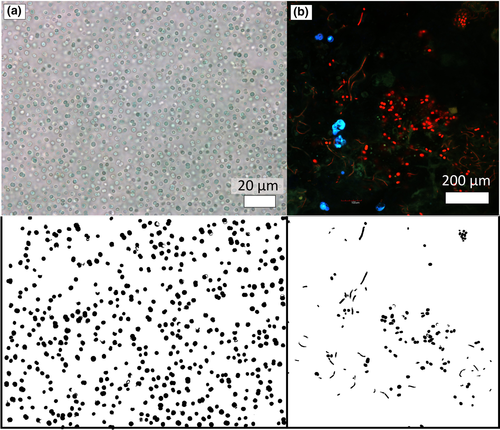Rouillard, J., García-Ruiz, J. M., Kah, L., Gérard, E., Barrier, L., Nabhan, S., … & van Zuilen, M. A. (2019). Identifying microbial life in rocks: Insights from population morphometry. Geobiology.
Download here: https://onlinelibrary.wiley.com/doi/full/10.1111/gbi.12377
The identification of cellular life in the rock record is problematic, since microbial life forms, and particularly bacteria, lack sufficient morphologic complexity to be effectively distinguished from certain abiogenic features in rocks. Examples include organic pore‐fillings, hydrocarbon‐containing fluid inclusions, organic coatings on exfoliated crystals and biomimetic mineral aggregates (biomorphs). This has led to the interpretation and re‐interpretation of individual microstructures in the rock record. The morphologic description of entire populations of microstructures, however, may provide support for distinguishing between preserved micro‐organisms and abiogenic objects. Here, we present a statistical approach based on quantitative morphological description of populations of microstructures. Images of modern microbial populations were compared to images of two relevant types of abiogenic microstructures: interstitial spaces and silica–carbonate biomorphs. For the populations of these three systems, the size, circularity, and solidity of individual particles were calculated. Subsequently, the mean/SD, skewness, and kurtosis of the statistical distributions of these parameters were established. This allowed the qualitative and quantitative comparison of distributions in these three systems. In addition, the fractal dimension and lacunarity of the populations were determined. In total, 11 parameters, independent of absolute size or shape, were used to characterize each population of microstructures. Using discriminant analysis with parameter subsets, it was found that size and shape distributions are typically sufficient to discriminate populations of biologic and abiogenic microstructures. Analysis of ancient, yet unambiguously biologic, samples (1.0 Ga Angmaat Formation, Baffin Island, Canada) suggests that taphonomic effects can alter morphometric characteristics and complicate image analysis; therefore, a wider range of microfossil assemblages should be studied in the future before automated analyses can be developed. In general, however, it is clear from our results that there is great potential for morphometric descriptions of populations in the context of life recognition in rocks, either on Earth or on extraterrestrial bodies.


